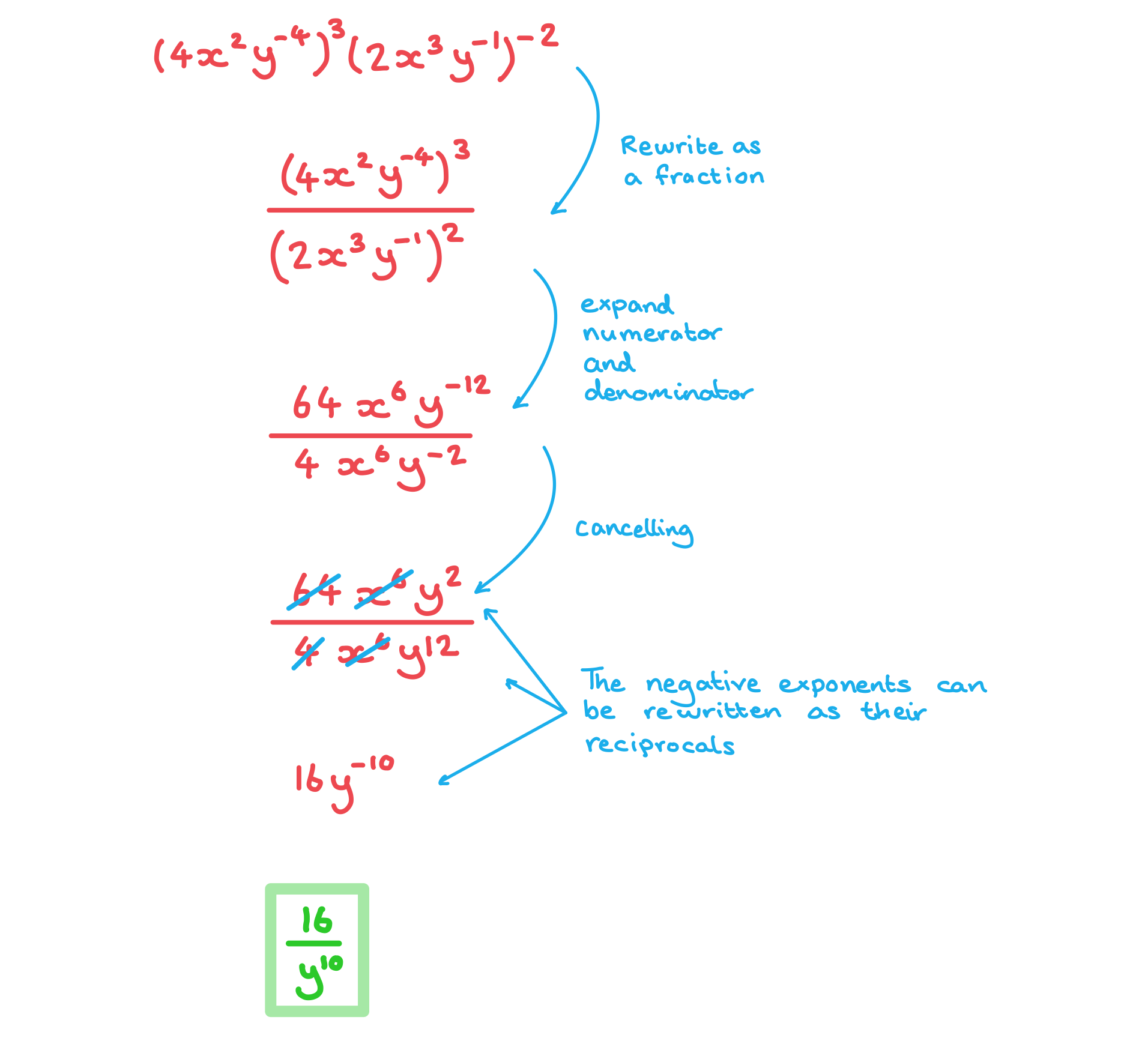Laws of Indices (DP IB Analysis & Approaches (AA)): Revision Note
Did this video help you?
Laws of indices
What are the laws of indices?
Index laws are rules for doing operations with powers
They work on both numbers and algebra
Law | Description | How it works |
Anything to the power of 1 is itself | ||
Anything to the power of 0 is 1 | ||
To multiply indices with the same base, add their powers | ||
To divide indices with the same base, subtract their powers | ||
To raise indices to a new power, multiply their powers | ||
To raise a product to a power, apply the power to both numbers, and multiply | ||
To raise a fraction to a power, apply the power to both the numerator and denominator | ||
A negative power is the reciprocal | ||
A fraction to a negative power, is the reciprocal of the fraction, to the positive power | ||
The fractional power | ||
A negative, fractional power is one over a root | ||
The fractional power |
Examiner Tips and Tricks
The index laws are not in the formula booklet so you must remember them!
How do I change the base?
Index laws only work with terms that have the same base
cannot be simplified using index laws
You can sometimes rewrite a base as a power of another base
The
changes to
This is called changing the base
It can now be simplified using index laws
Worked Example
Simplify the following expressions:
i)
Answer:

ii)
Answer:


Unlock more, it's free!
Did this page help you?